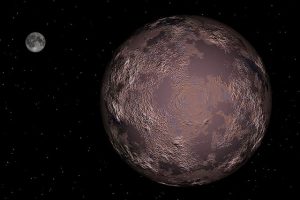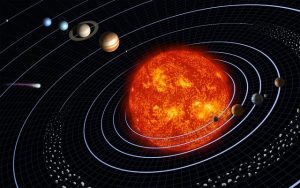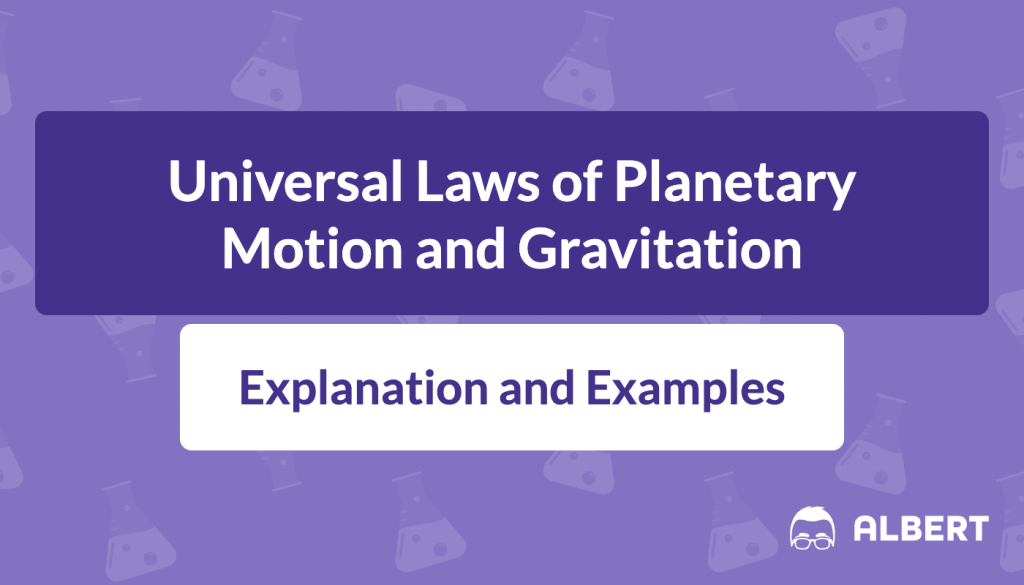Ever wondered how planets like Earth stay on their path around the sun? It all comes down to some basic rules, known as universal laws, that keep everything in space moving just right. These aren’t just any rules; they’re like the universe’s way of organizing how planets and stars move. People like Johannes Kepler and Isaac Newton figured these out hundreds of years ago. Today, their discoveries still help us understand the sky. This post will review these universal laws and why they matter. We’ll look at how they explain the paths planets take, including the orbit of our Earth. Join us as we explore the simple yet powerful forces that shape our universe.
What We Review
Universal Laws and Their Discovery

Long ago, people started to figure out the rules that make planets and stars move the way they do. Two big names in this discovery are Johannes Kepler and Isaac Newton. They saw patterns in the chaos of space and laid down some laws that still guide us today.
Kepler’s Laws
Kepler’s Laws simplify the complex motions of planets into three principles:
- First Law (The Law of Ellipses): Kepler discovered that planets orbit the sun in ellipses, not perfect circles, with the sun located at one of the focal points of the ellipse. This means the distance between a planet and the sun varies throughout its orbit.
- Second Law (The Law of Equal Areas): This law states that as a planet orbits the sun, the line between the sun and the planet covers equal areas in equal times. This implies that a planet moves faster when it is closer to the sun and slower when it is farther from the sun, ensuring that the area swept is consistent over time.
- Third Law (The Law of Harmonies): According to this law, the square of a planet’s orbital period (the time it takes to complete one orbit around the sun) is proportional to the cube of its average distance from the sun. This relationship shows how the distance from the sun affects the duration of a planet’s year.
To see what this looks like in an animation, check out the following video:
Newton’s Law of Universal Gravitation
Newton’s Universal Law of Gravitation is a fundamental principle that describes how every object in the universe attracts every other object. The force of attraction is directly proportional to the product of their masses. This means that larger masses result in a larger force of gravity. It is inversely proportional to the square of the distance between their centers. This means that the gravitational force gets weaker as objects get further apart. These values are multiplied by the gravitational constant, G, that applies to all the objects in the universe.
| Newton’s Law of Universal Gravitation F_g = G\dfrac{M_1 M_2}{r^2} G = 6.67 \times 10^{-11}\text{ Nm}^2\text{/kg}^2 |
This law provides the basis for calculating gravitational force, which helps us understand the motion of planets and stars. Newton’s formula for gravitation offers a precise method to determine this force and illustrates the universal nature of gravity in governing celestial orbits and terrestrial phenomena alike.
We better understand orbital motion by combining Kepler’s observational laws with Newton’s theoretical framework. These principles explain the paths of planets and highlight the predictability and order within the vastness of space.
Universal Laws Practice Exercises
Exercise 1: Understanding Kepler’s Second Law
Imagine a planet orbiting the sun in an elliptical orbit. At one point in its orbit, it is 150\text{ million kilometers} from the sun (point A). At another point, it is 100\text{ million kilometers} from the sun (point B).
If it takes the planet 50 days to travel from point A to point B, how long will it take to travel an equal area at a point in its orbit where it is furthest from the sun?
Explain how this demonstrates Kepler’s Second Law of Planetary Motion.
Solution Guidelines:
Kepler’s Second Law states that a line segment joining a planet and the sun sweeps out equal areas during equal time intervals. Therefore, regardless of where the planet is in its orbit, it will take the same 50 days to sweep out an equal area. This demonstrates the constant areal velocity of the planet in its orbit.
Exercise 2: Applying Newton’s Law of Universal Gravitation
Consider two objects in space: Object A with a mass of 6 \times 10^{24}\text{ kg} (similar to Earth) and Object B with a mass of 7.35 \times 10^{22}\text{ kg} (similar to the Moon). The average distance between the centers of these two objects is approximately 3.84 \times 10^8\text{ m}.
Using Newton’s Law of Universal Gravitation, calculate the gravitational force between Object A and Object B.
Formula: F_g = G\dfrac{M_1 M_2}{r^2} where G = 6.67 \times 10^{-11}\text{ Nm}^2\text{/kg}^2
Solution Guidelines:
Plug in the given values to the formula to calculate the force. This exercise helps us understand Newton’s law’s direct and inverse relationships.
F_g = G\dfrac{M_1 M_2}{r^2}
F_g = 6.67 \times 10^{-11}\text{ Nm}^2\text{/kg}^2\cdot \dfrac{6 \times 10^{24}\text{ kg}\cdot 7.35 \times 10^{22}\text{ kg}}{(3.84 \times 10^8\text{ m})^2}
F_g= 1.99\times 10^{20}\text{ Newtons}
What is an Orbit?
An orbit is the path that a celestial body follows as it moves around another body in space due to the gravitational pull of the larger body. This gravitational force is the central factor that initiates and maintains orbits. For an orbit to be stable, gravity must be balanced by the orbital velocity of the smaller body.
To illustrate these principles, let’s consider Earth’s orbit around the sun. Earth is kept in its orbit by the sun’s gravitational pull. This delicate balance between gravity pulling Earth and Earth’s orbital velocity keeps our planet in a stable orbit. Earth’s orbit is nearly circular, taking about 365.25 days to complete one full trip around the sun. This yearly journey, with Earth’s tilt, gives us our seasons and the variation in daylight throughout the year.

In essence, an orbit results from the perfect balance between the pull of gravity from a larger body and the forward motion of a smaller body. This balance allows planets, moons, and satellites to travel in predictable paths, demonstrating the elegant harmony of celestial mechanics. Combined with the universal laws of motion and gravitation, we can predict and explain the orbits of many celestial objects.
Earth’s Journey Around the Sun
How Long Does It Take Earth to Orbit the Sun?
Earth completes one orbit around the sun in about 365.25 days. This quarter of a day extra is why we add an extra day, February 29th, to the calendar every four years—a day we call a leap year. This adjustment keeps our calendar aligned with Earth’s revolutions around the sun.
The length of Earth’s orbit is determined by its distance from the sun and the gravitational forces. The velocity at which Earth travels through space is perfectly balanced to keep it in a stable orbit. This prevents it from moving too close to or too far from the sun.
The Significance of Earth’s Orbit for Seasons and Life on Our Planet
Earth’s orbit is not a perfect circle but slightly elliptical. This elliptical orbit, combined with the Earth’s tilt on its axis, results in varying amounts of sunlight hitting different parts of the Earth at different times of the year, creating our seasons. As Earth moves around the sun, different regions tilt towards or away from the sun. This leads to changes in weather, temperature, and the length of days and nights.
This orbital dance helps life thrive on Earth. It regulates climates, influences weather patterns, and controls plant growth cycles and animal behavior. The predictable change of seasons allows for diverse ecosystems around the planet, supporting a wide range of life forms.
What is a Leap Year?
A leap year occurs every four years to correct a small discrepancy between our calendar year and the astronomical year. Since Earth’s orbit around the sun takes approximately 365.25 days, we add one extra day every four years to keep our calendar in sync with Earth’s position in its orbit. This adjustment ensures that seasonal events, such as equinoxes and solstices, occur around the same dates each year, maintaining the consistency of our seasonal cycles.
Conclusion: Universal Laws of Motion and Gravitation
The universal laws of motion and gravitation are fundamental to astronomy. They offer a clear understanding of how celestial bodies move and interact. Through the insights of Kepler and Newton, we grasp not just the planets’ orbits but the cosmos’ grand scheme. These laws reveal the universe’s interconnectedness, showing us that everything is bound by the same principles despite the vast distances. This understanding underscores the elegance and harmony of the universe, reminding us of the precision and predictability that govern the cosmos.









